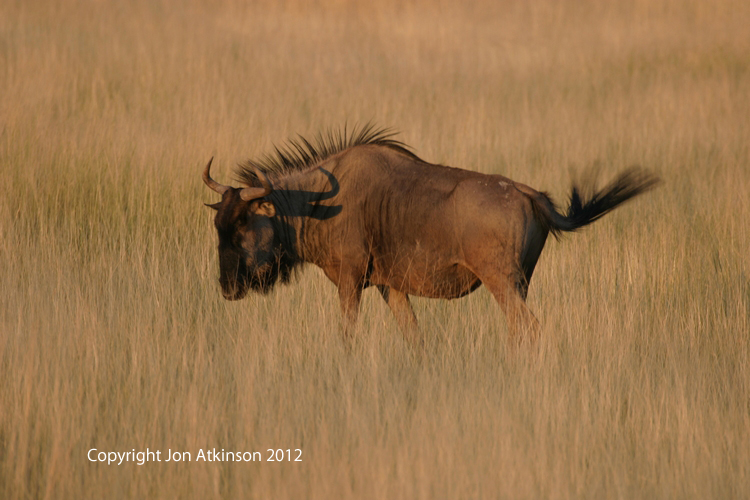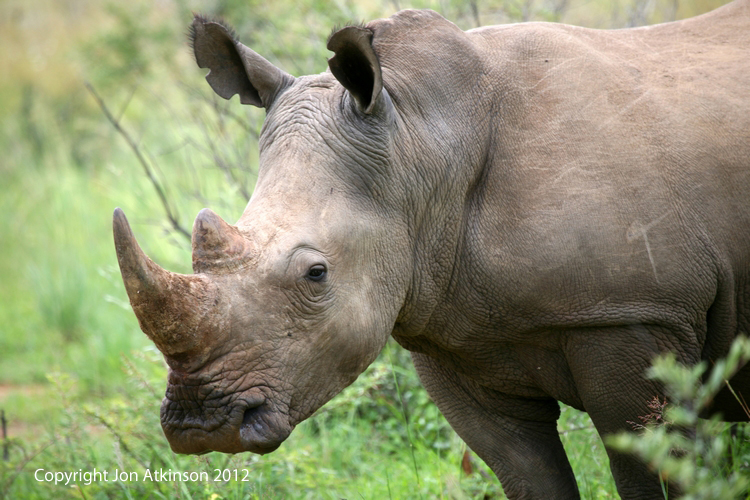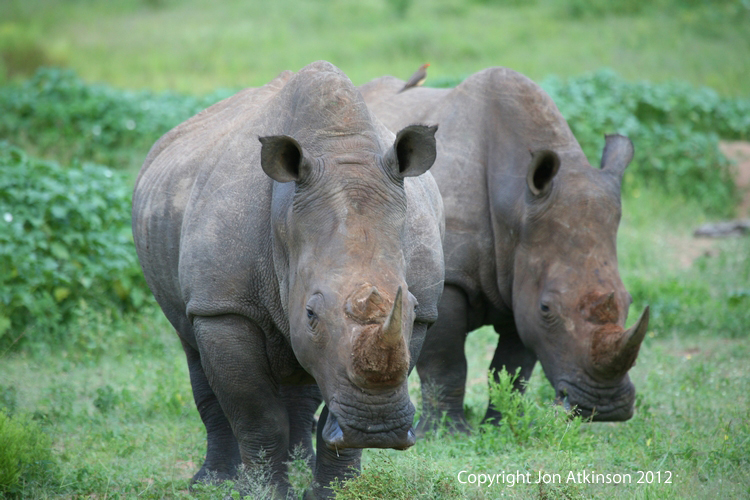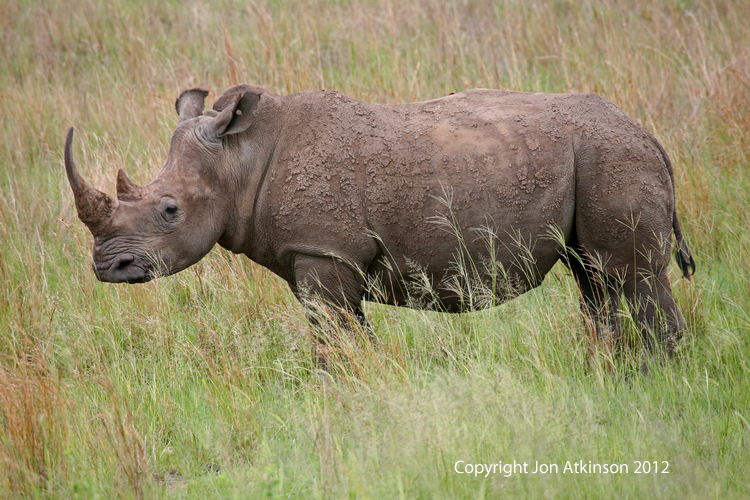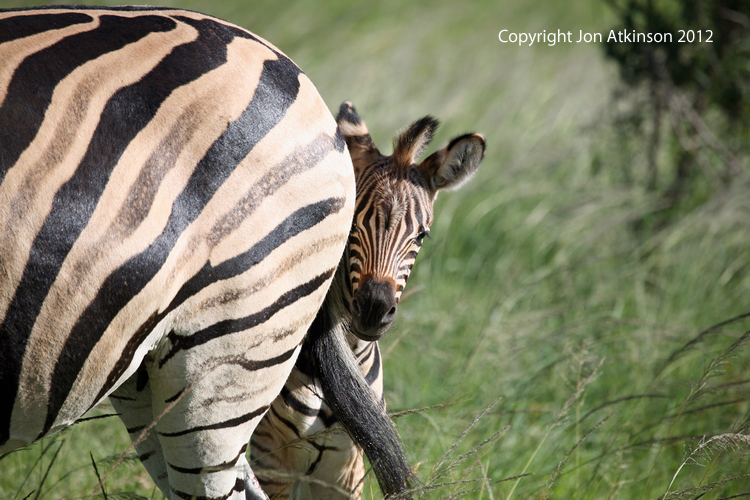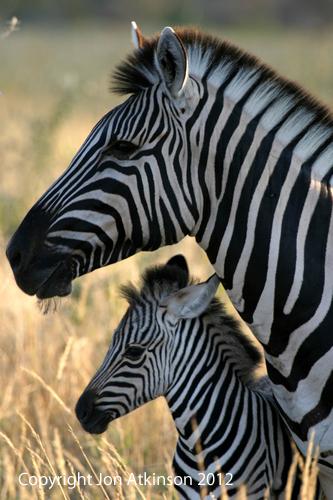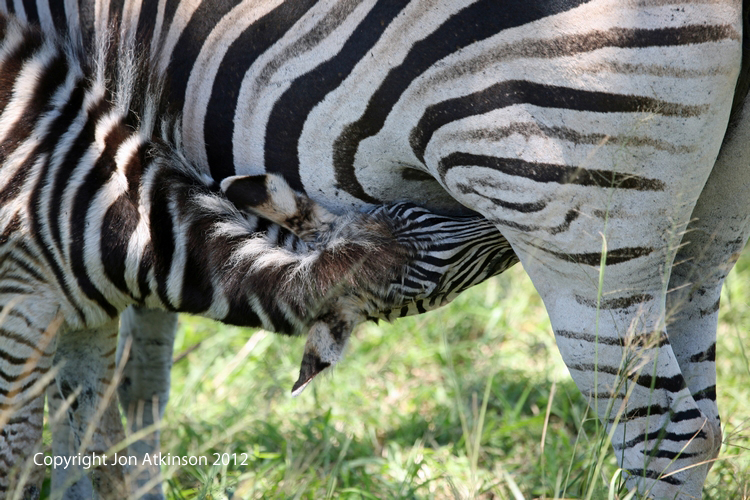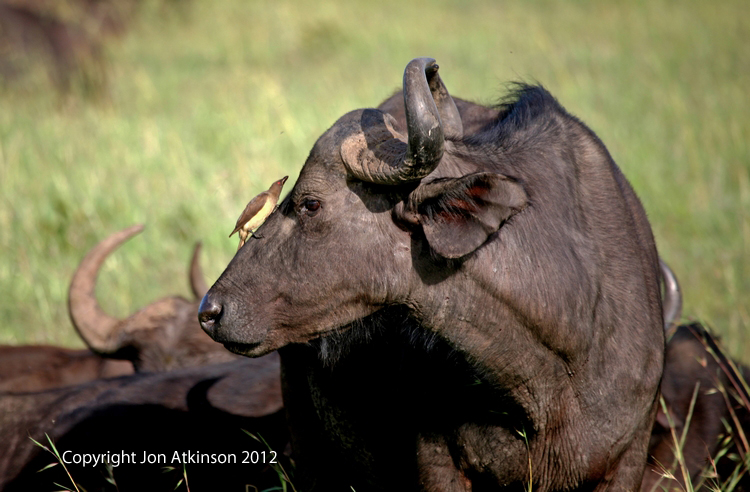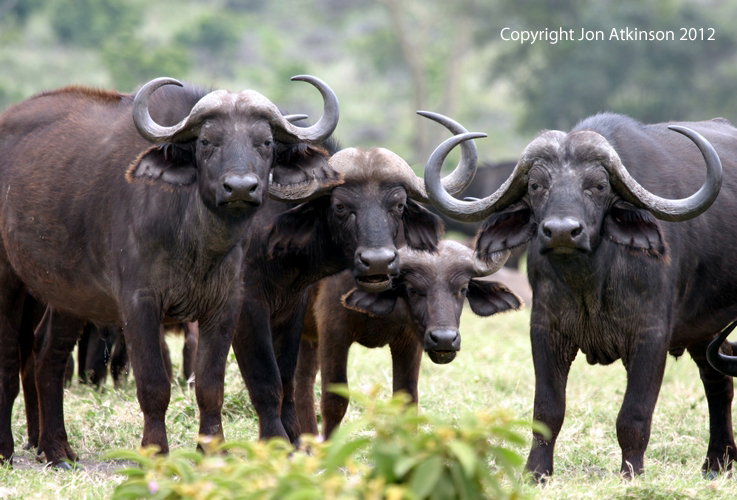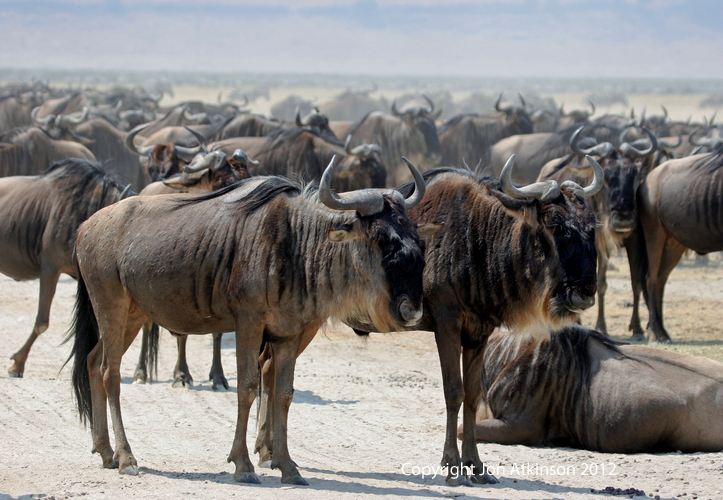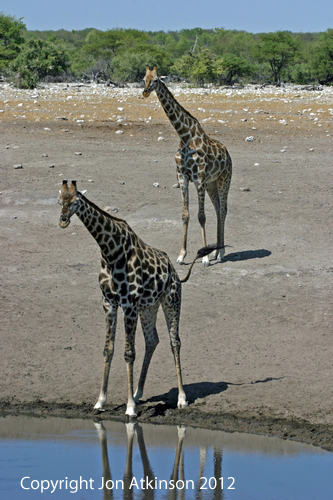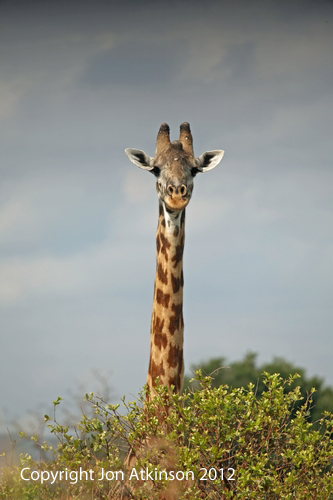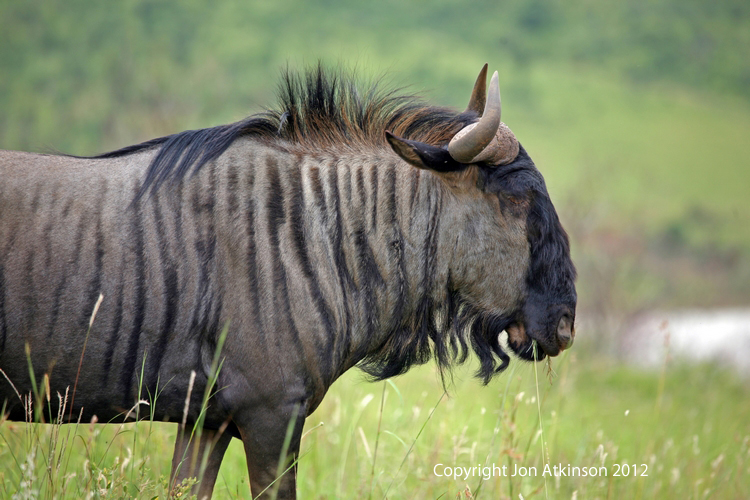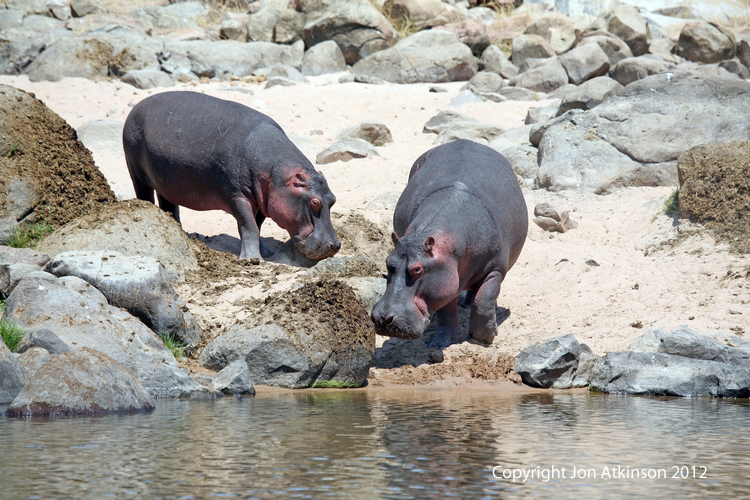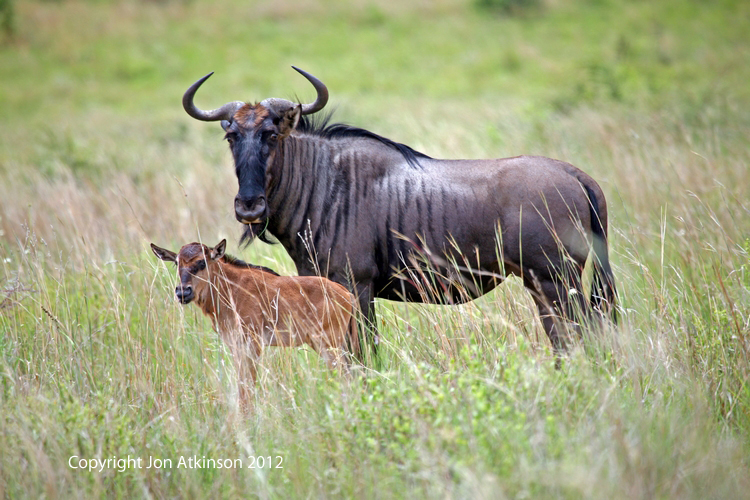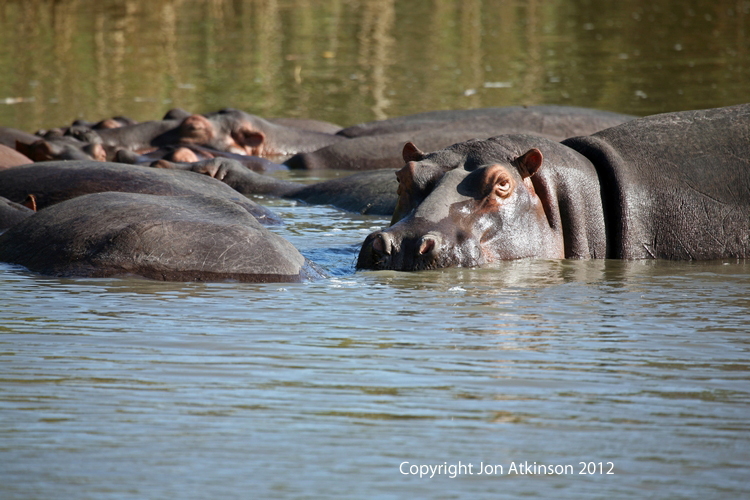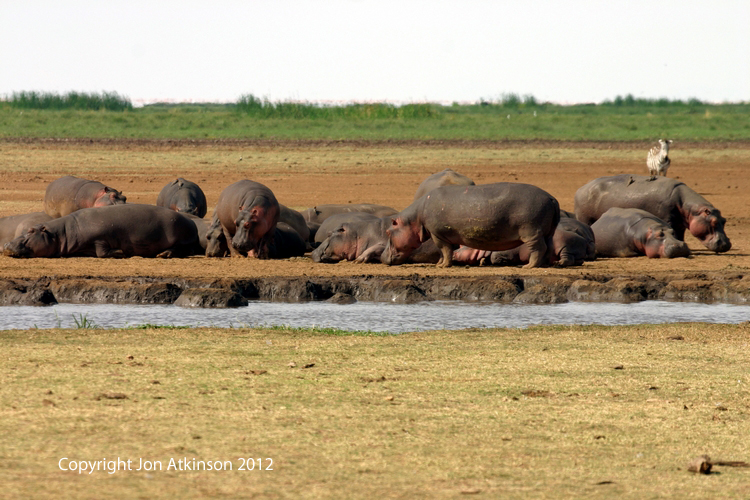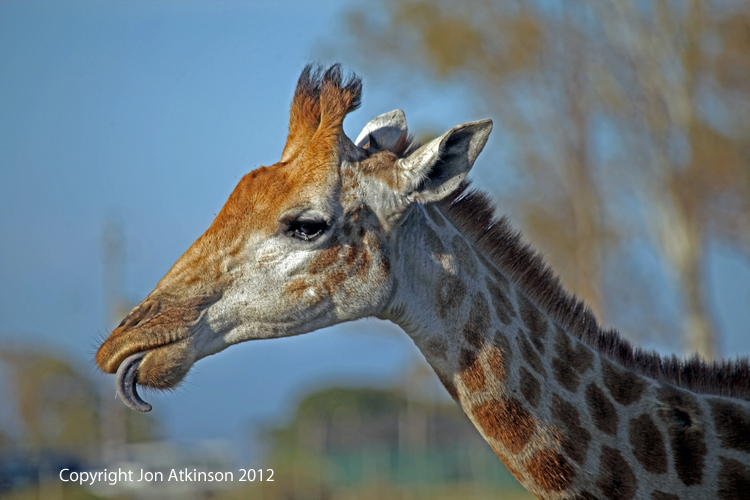ALM1 - Mating Lions, Etosha National Park, Namibia: When a female lion comes into oestrus, the first male in the pride to find her courts and mates with her. A male may mate with all the females in his pride. If there is more than one mature male in the pride, they can all mate with any female and are usually respectful of each other’s choice. Copulation takes place every 10 to 25 minutes and lasts for about 20 seconds at a time. It is initiated by both male and female, but seemingly more often by the female who gets very energetic during her oestrus. |
ALM2 - African Elephant, Etosha National Park, Namibia: An annoyed elephant will usually first mock charge. This usually first involves a lot of ear flapping, head shaking and loud trumpeting – mock charges are often preceded by ‘displacement activities’, and the animals often show uncertainty about charging. The individual then runs towards you with ears spread out, head held high, and trumpeting loudly |
ALM3 - Wildebeest, Etosha National Park, Namibia: The Gnu or Wildebeest is a fast-running plant-eater from eastern African grasslands. The name wildebeest means "wild beast" in the language Afrikaans. Wildebeests gather in enormous herds of up to a million animals. The Wildebeest is up to 5 feet (1.5 m) tall at the shoulder and weighs up to 600 pounds (275 kg). Both males and females have sharp, curved, smooth horns. Males are slightly larger than females. They all have beards (white or black, depending on the subspecies), long manes, humped shoulders, and long legs. |
ALM4 - White Rhino, Garden Route N.P. South Africa: The common name White Rhinoceros is confusing and probably originated when early English settlers misinterpreted the Afrikaans word weit for white. Weit means wide; therefore it has nothing to do with the color of the animal. The white rhinoceros is also referred to as the square lipped rhinoceros. White rhinos are found on savanna grasslands and in the savanna woodlands that have interspersed grassy clearings. |
ALM5 - White Rhino, Garden Route N.P. South Africa: White rhinos graze on grasses, walking with their enormous heads and squared lips lowered to the ground. White rhinos are the second most massive remaining land mammal, with a shoulder height of up to 1.8 meters (6 feet) and weight of 1,800 - 2,700 kg (4,000 – 6,000 lbs). Whilst running white rhinos are able to attain a maximum speed of 50km/h (28 mph) over short distances. |
ALM6 - White Rhino, Ngorongoro National Park, Tanzania: Under the hot African sun, white rhinos they take cover by lying in the shade. Rhinos are also wallowers. They find a suitable water hole and roll in its mud, coating their skin with a natural bug repellent and sun block. The white rhino once roamed much of sub-Saharan Africa, but today is on the verge of extinction due to poaching fueled by these commercial uses. Today, only about 11,000 white rhinos survive in the wild. |
ALM7 - Burchell's Zebra, Kruger National Park, South Africa: Burchell's zebras inhabit savannas, from treeless grasslands to open woodlands. They sometimes occur in tens of thousands in migratory herds on the Serengeti plains. Although they are adapted to semi-arid conditions and require less water than other zebra species, these zebras compete with domestic livestock for water and have suffered heavy poaching for their meat and skins. |
ALM8 - Burchell's Zebra, Etosha National Park, Namibia: They have black and white stripes that cover their body and a black and white mane of stiff hair that stands up along the back of their neck. They grow to a mass of 290kg-340kg (638lbs-748 lbs) and are on average 1.4m at shoulder height. |
ALM9 - Burchell's Zebra, Kruger National Park, South Africa: Female Burchell's zebras usually give birth to a single foal, which can walk within minutes of being born and run within about an hour. Foals recognize their mothers by her black and white stripe pattern. Within a week, zebra foals are socializing and grazing along side the other members of the herd. |
ALM10 Cape Buffalo, Kruger National Park, South Africa: Cape buffalo are large, adults stand 4-6 feet tall and males weigh in at around 700 kg's (1500 lb's). On the more open grasslands, Cape buffalo appear in large herds that can number up to a thousand individuals. Cape Buffalo live close to water. In general buffaloes are found throughout the northern and southern savanna as well as the lowland rain forest. |
ALM11 - Cape Buffalo, Tarangire National Park, Tanzania: There is only one species of buffalo in Africa, but two distinct subspecies exist: the large savanna buffalo and the much smaller forest buffalo. The forest subspecies is only found in central and West Africa. Grass forms the greatest part of the diet of the African buffalo, which mostly feeds at night. |
ALM12 - Wildebeest, Ngorongoro National Park,Tanzania: In the Serengeti- Massai Mara ecosystem Wildebeest make a migratory circle each year of 500 to 1,000 miles. The migration starts after the calving season in January and February on the short grass plains in the southeastern Serengeti. Wildebeests move west toward Lake Victoria, across the grass savanna to the open woodlands, then turn north into the Massai Mara. They then begin the return trip to the south. |
ALM13 - Giraffe, Etosha National Park, Namibia: Giraffes live in open habitats, primarily wooded savannas and open woodlands. Riparian forests (those growing along watercourses) are especially important to giraffes living in arid areas. Giraffes do not live in areas dominated by moist tropical forest. |
ALM14 - Giraffe, Etosha National Park, Namibia: The giraffe's stature can be a disadvantage as well—it is difficult and dangerous for a giraffe to drink at a water hole. To do so they must spread their legs and bend down in an awkward position that makes them vulnerable to predators like Africa's big cats. Giraffes only need to drink once every several days; they get most of their water from the luscious plants they eat. |
ALM15 - Giraffe, Etosha National Park, Namibia: Giraffes are one of the world's tallest mammals. Male giraffes are larger than females. Males stand up to 18 feet tall and weigh up to 4,200 pounds; females grow to 16 feet tall and weigh up to 2,500 pounds.They are well known for their long necks, long legs, and spotted patterns. Giraffes have small "horns" or knobs on top of their heads that grow to be about five inches long. These knobs are used to protect the head in fights. |
ALM16 - Wildebeest, Mlilwane Wildlife Sanctuary, Swaziland: Wildebeest habitat comprises the grassy plains and open woodlands of central, southern, and eastern Africa, particularly the Serengeti in Tanzania and Kenya. They travel in large herds and are active day and night, grazing constantly. |
ALM17 - Hippopotamus, Etosha National Park, Namibia: Hippopotamus, (plural: hippopotamuses or hippopotami), a large animal found in tropical Africa. Its name comes from the Greek for “river horse,” although the hippopotamus is related to the hog rather than the horse. It spends most of its time in or near freshwater, but will travel inland in search of food. |
ALM18- Wildebeest, Mlilwane Wildlife Sanctuary, Swaziland: Wildebeest females give birth to a single calf. Around 80 percent of the females calve within the same 2- to 3 week period, creating a glut for predators and thus enabling more calves to survive the crucial first few weeks. A calf can stand and run within minutes of birth. It immediately begins to follow its mother and stays close to her to avoid getting lost or killed by waiting predators. Within days, it can run fast enough to keep up with the adult herd. |
ALM19 - Hippopotamus, Queen Elizabeth N.P., Uganda: Once the cheetahs range ran from India, through the Middle East and extended to the very south of the African continent. Today, in Africa, with the spread of the human influence and exploitation in hunting, the cheetahs range has shrunken dramatically - now only the grass lands and plains of east and central Africa are home to its dwindling numbers with estimates of the whole population now below 12,000 animals. Outside of this range they are virtually extinct. |
ALM20 - Hippopotamus, Serengetti National Park, Tanzania: The hippopotamus is perfectly at home in the water, mating and giving birth there. Due to its specific gravity, it can submerge itself completely and walk on the bottom of the river. It comes up on land for about five hours every night to feed on grasses and crops. The hippopotamus is most dangerous when it feels cut off from the relative safety of its watery environment. |
ALM21 - Giraffe, Garden Route N.P. South Africa: Giraffes use their height to good advantage and browse on leaves and buds in treetops that few other animals can reach (acacias are a favorite). Even the giraffe's tongue is long! The 21-inch (53-centimeter) tongue helps them pluck tasty morsels from branches. |



